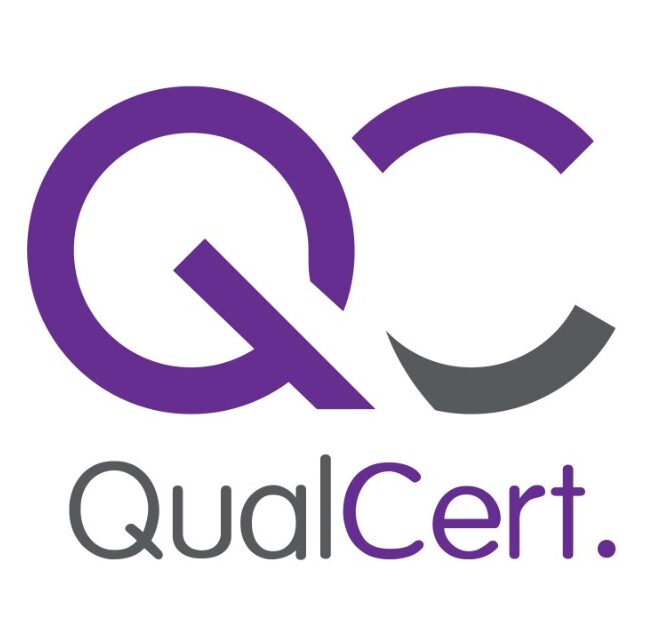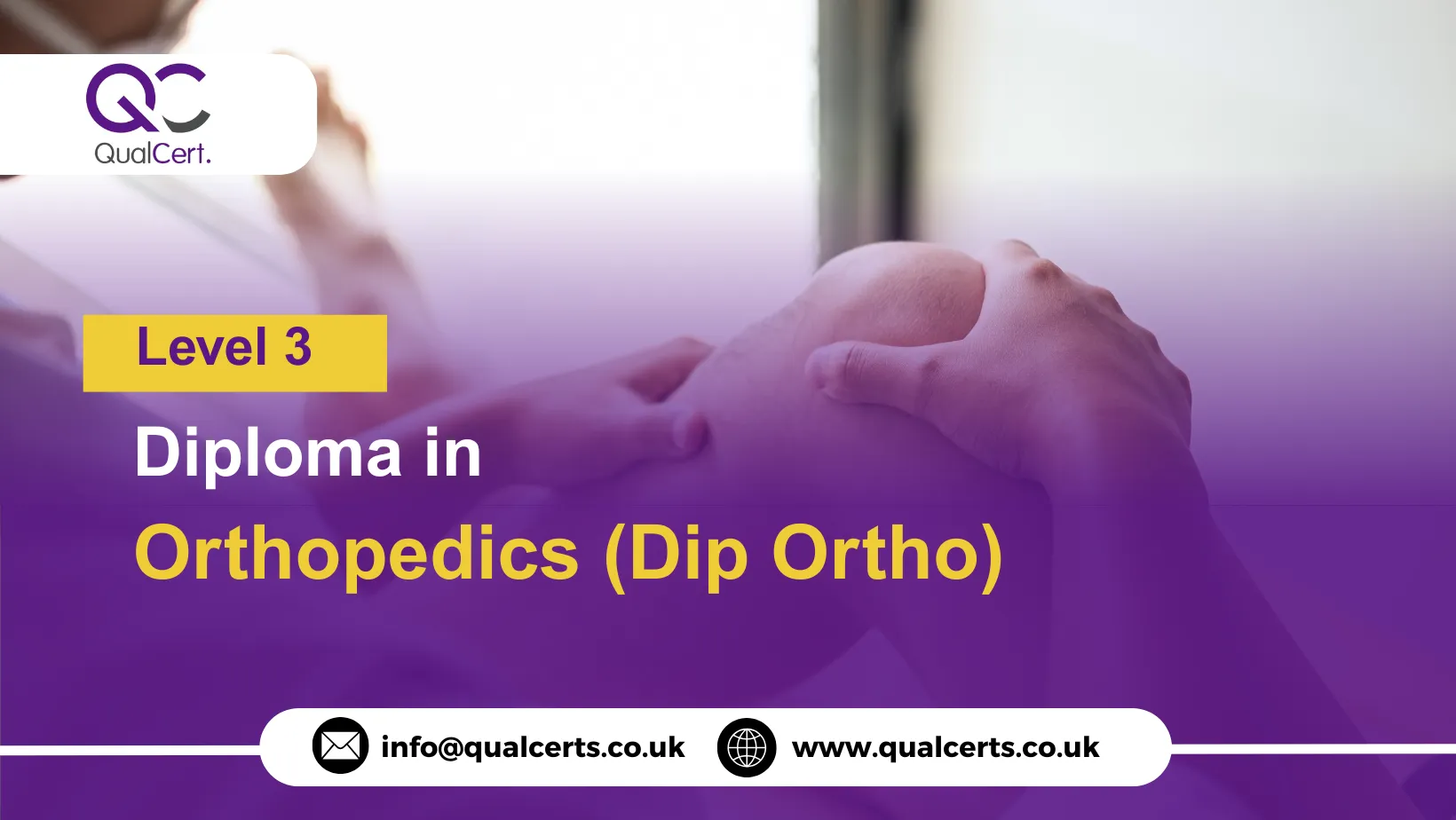Orthopedic care is a specialised field within healthcare focused on the diagnosis, treatment, and prevention of disorders affecting the musculoskeletal system, including bones, joints, ligaments, and muscles. With an increasing prevalence of musculoskeletal conditions, the demand for skilled healthcare professionals in orthopedics is rising. The QualCert Level 3 Diploma in Orthopedics (Dip Ortho) is designed to provide healthcare practitioners with comprehensive theoretical knowledge and practical skills required for effective orthopedic care.
The Level 3 Diploma in Orthopedics equips learners with an understanding of musculoskeletal anatomy, common orthopedic conditions, diagnostic techniques, and treatment methods. This course is suitable for healthcare professionals, including nurses, medical assistants, physiotherapists, and allied health practitioners seeking to specialise in orthopedic care. It combines evidence-based theory with practical application, preparing learners for clinical roles in hospitals, clinics, rehabilitation centres, and community health settings.
Completing the QualCert Level 3 Diploma in Orthopedics equips learners with the skills and knowledge required to work confidently in orthopedic and general healthcare settings. Graduates can contribute to improved patient outcomes, support rehabilitation programmes, and demonstrate professional competence in a specialised area of healthcare.
The QualCert Level 3 Diploma in Orthopedics provides a comprehensive learning pathway for healthcare professionals wishing to specialise in musculoskeletal care. By combining theoretical knowledge, practical skills, and professional practice standards, this diploma prepares learners to deliver high-quality orthopedic care and advance their careers in the healthcare sector.
Course Contents of QualCert Level 3 Diploma in Orthopedics (Dip Ortho):
The QualCert Level 3 Diploma in Orthopedics (Dip Ortho), offers 60 Credits, requiring a Total Qualification Time (TQT) of 300 hours, including 210 Guided Learning Hours (GLH).
| Unit Ref# | Unit Title | Credit | GLH | TQT |
| QC27118-1 | Introduction to Orthopedics and Musculoskeletal Anatomy | 10 | 35 | 50 |
| QC27118-2 | Common Orthopedic Conditions and Risk Factors | 10 | 35 | 50 |
| QC27118-3 | Diagnostic Techniques and Clinical Assessment in Orthopedics | 10 | 35 | 50 |
| QC27118-4 | Orthopedic Treatments, Interventions, and Patient Care | 10 | 35 | 50 |
| QC27118-5 | Pharmacology and Therapeutic Management in Orthopedics | 10 | 35 | 50 |
| QC27118-6 | Ethical, Legal, and Professional Practice in Orthopedic Care | 10 | 35 | 50 |
Entry Requirements for the QualCert Level 3 Diploma in Orthopedics (Dip Ortho):
Minimum Age
- Learners must be at least 18 years old to enrol in this course. This ensures that participants have the maturity required to engage with professional healthcare training and clinical practice scenarios.
Educational Background
- A basic level of education is required, such as a high school diploma or equivalent.
- A background in healthcare, life sciences, anatomy, or a related field is preferred but not mandatory. This foundational knowledge will help learners grasp the theoretical and practical concepts of orthopedic care more effectively.
Experience
- Prior experience in healthcare, clinical environments, or patient care is recommended.
- Practical experience enables learners to better understand clinical procedures, patient assessment, and treatment planning, which are critical components of orthopedic practice.
Language Proficiency
- Learners must have sufficient English language skills to comprehend course materials, complete written assignments, and communicate effectively in clinical settings.
- Proficiency in English is essential to ensure safe practice, accurate patient communication, and adherence to professional standards in healthcare.
Learning Outcomes of QualCert Level 3 Diploma in Orthopedics (Dip Ortho)
Introduction to Orthopedics and Musculoskeletal Anatomy
- Understand the structure and function of bones, joints, muscles, and ligaments.
- Explain the biomechanics of movement and musculoskeletal health.
- Identify musculoskeletal structures relevant to orthopedic assessment.
- Recognise the importance of musculoskeletal health in overall patient care.
Common Orthopedic Conditions and Risk Factors
- Identify and differentiate common orthopedic conditions, including fractures, joint disorders, and musculoskeletal injuries.
- Analyse risk factors such as age, lifestyle, genetics, and comorbidities.
- Understand complications associated with untreated or poorly managed orthopedic conditions.
- Review epidemiological trends and public health implications of musculoskeletal disorders.
Diagnostic Techniques and Clinical Assessment in Orthopedics
- Conduct comprehensive musculoskeletal assessments including patient history, physical examination, and functional testing.
- Interpret diagnostic tools such as X-rays, MRIs, CT scans, and bone density scans.
- Apply clinical reasoning to identify musculoskeletal abnormalities.
- Develop patient monitoring strategies for both acute and chronic orthopedic conditions.
Orthopedic Treatments, Interventions, and Patient Care
- Understand non-invasive and invasive treatment options, including physiotherapy, surgical interventions, and rehabilitation techniques.
- Develop patient-centred care plans for managing orthopedic conditions.
- Apply principles of injury management, rehabilitation, and long-term musculoskeletal care.
- Evaluate the effectiveness of interventions and modify care plans as needed.
Pharmacology and Therapeutic Management in Orthopedics
- Understand commonly used medications in orthopedic care, including pain management, anti-inflammatories, and bone health supplements.
- Identify contraindications, adverse effects, and drug interactions.
- Apply pharmacological knowledge safely in clinical practice.
- Monitor treatment outcomes and adjust therapy according to patient response.
Ethical, Legal, and Professional Practice in Orthopedic Care
- Apply ethical principles in patient care and clinical decision-making.
- Understand legal requirements and professional standards relevant to orthopedic practice.
- Promote professional behaviour, reflective practice, and effective communication with patients and colleagues.
- Ensure patient confidentiality, safety, and quality of care in all clinical interactions.
The QualCert Level 3 Diploma in Orthopedics is designed for healthcare professionals and learners who wish to specialise in musculoskeletal care and develop advanced skills in orthopedic assessment, treatment, and patient management. It is suitable for individuals who are currently working in healthcare settings or aspire to pursue a career in orthopedics, physiotherapy, rehabilitation, or musculoskeletal health.
This course is particularly valuable for nurses, medical assistants, physiotherapists, and allied health practitioners who wish to enhance their expertise in diagnosing and managing musculoskeletal conditions. It is also ideal for healthcare professionals who are involved in patient care and rehabilitation programs, providing them with internationally recognised qualifications to improve patient outcomes and professional credibility.
Additionally, the course is suitable for individuals seeking to develop both theoretical knowledge and practical skills in orthopedics, including:
- Practitioners working in hospitals, clinics, or rehabilitation centres.
- Healthcare professionals aiming to specialise in orthopedic conditions such as fractures, joint disorders, and musculoskeletal injuries.
- Individuals preparing for further studies in musculoskeletal medicine, physiotherapy, or related healthcare disciplines.
- Professionals seeking to demonstrate competence in patient-centred care, ethical practice, and clinical decision-making in orthopedics.
The Level 3 Diploma ensures that learners acquire a strong foundation in orthopedic theory, clinical assessment, treatment techniques, and professional practice, making it suitable for both new entrants to the field and experienced practitioners seeking career progression.
To deliver the Level 3 Diploma in Orthopedics effectively, training centres must meet the following requirements to ensure quality, safety, and compliance with international standards:
Qualified Teaching Staff
- Centres must employ trainers and assessors with relevant qualifications and professional experience in orthopedics, physiotherapy, or related healthcare disciplines.
- Staff should have both theoretical knowledge and practical experience to guide learners through clinical procedures, assessments, and patient care.
- Continuing professional development (CPD) for teaching staff should be encouraged to maintain up-to-date knowledge of industry best practices and advancements in orthopedic care.
Learning Resources
- Centres must provide comprehensive learning materials, including textbooks, clinical guidelines, case studies, and digital resources relevant to orthopedics.
- Access to musculoskeletal models, anatomical charts, and simulation tools should be available to facilitate practical learning.
- Online or library resources should support self-directed study and research.
Facilities and Equipment
- Adequate classroom spaces must be available for theoretical lessons with proper seating, lighting, and teaching aids.
- Practical training facilities must include access to orthopedic assessment tools, diagnostic equipment (e.g., X-ray, MRI references), and rehabilitation or physiotherapy tools.
- Centres should ensure compliance with health, safety, and infection control standards suitable for clinical and practical training.
Assessment and Quality Assurance
- Centres must have systems in place to conduct written assignments, practical demonstrations, and case study evaluations in line with QualCert assessment standards.
- Records of learner progress, attendance, and assessment outcomes should be maintained securely and accurately.
- Centres should implement internal quality assurance measures to ensure consistent and reliable delivery of the course.
Administrative Capabilities
- Centres must have administrative systems to manage enrolment, student records, certification, and communications with learners.
- Staff should be able to provide guidance and support to learners throughout the course, including assistance with assignments and practical sessions.
Health and Safety Compliance
- Centres must ensure that all learning environments meet current health and safety regulations, including safe handling of equipment and emergency procedures.
- Practical sessions should be conducted under supervision to ensure learner and patient safety during clinical simulations or placements.

